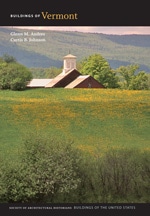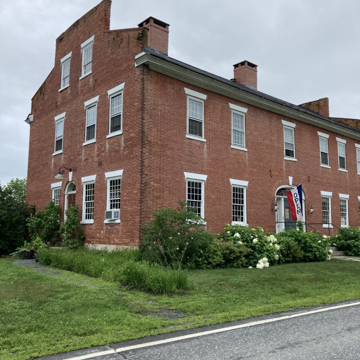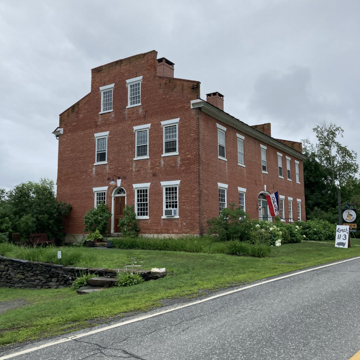Jacob Fox, who owned a brickyard and a tannery along the White River, built an inn on his land facing the stagecoach road between Royalton village and Bethel, contracting Amasa Dutton Jr. to carry out the work. The two-and-a-half-story brick, Georgian-plan building has an extra bay at its north end to allow for an enlarged tavern room and more guest rooms on the upper floors. Two massive interior chimneys provide four fireplaces on the first and second floors, as well as two kitchen hearths with bake ovens in the basement story that faces the rear. The inn was immediately successful, and in 1820 Fox had Dutton build him a two-and-a-half-story, gable-front brick store on the east side of the road just to the south. It had large multipane shop windows and the recessed wall arches then popular throughout Windsor County. In 1821, Fox moved next door to his store into a brick, side-hall-plan house with an entrance similar to that of the inn and with wall arches over its first-floor front windows. Foxville, as the cluster of brick buildings became known, thrived until Fox's death in 1838. The inn continued until 1850 when the railroad caused its demise, but the store continued in operation until 1918. The inn reopened as the Fox Stand in the late twentieth century and Foxville remains one of the best-preserved early-nineteenth-century rural stagecoach stops in Vermont.
You are here
“Foxville”
If SAH Archipedia has been useful to you, please consider supporting it.
SAH Archipedia tells the story of the United States through its buildings, landscapes, and cities. This freely available resource empowers the public with authoritative knowledge that deepens their understanding and appreciation of the built environment. But the Society of Architectural Historians, which created SAH Archipedia with University of Virginia Press, needs your support to maintain the high-caliber research, writing, photography, cartography, editing, design, and programming that make SAH Archipedia a trusted online resource available to all who value the history of place, heritage tourism, and learning.










